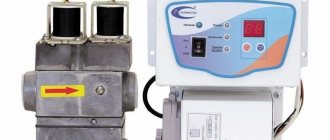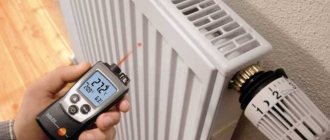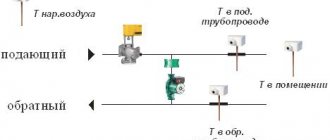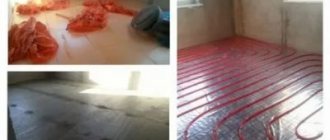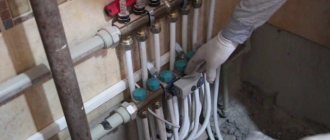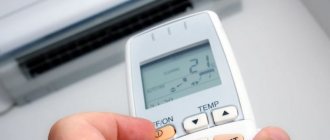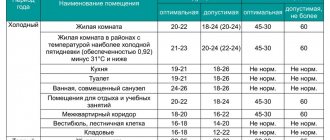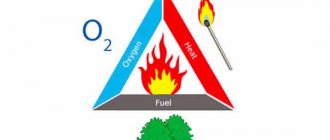Temperature standards
Requirements for coolant temperature are set out in regulatory documents that establish the design, installation and use of engineering systems of residential and public buildings. They are described in the State Building Codes and Rules:
- DBN (V. 2.5-39 Heat networks);
- SNiP 2.04.05 “Heating, ventilation and air conditioning.”
For the calculated supply water temperature, the figure is taken that is equal to the water temperature at the outlet of the boiler, according to its passport data.
For individual heating, deciding what the coolant temperature should be should take into account the following factors:
- The beginning and end of the heating season based on the average daily outdoor temperature of +8 °C for 3 days;
- The average temperature inside heated premises of housing, communal and public importance should be 20 °C, and for industrial buildings 16 °C;
- The average design temperature must comply with the requirements of DBN V.2.2-10, DBN V.2.2.-4, DSanPiN 5.5.2.008, SP No. 3231-85.
According to SNiP 2.04.05 “Heating, ventilation and air conditioning” (clause 3.20), the coolant limit values are as follows:
For a hospital - 85 °C (excluding psychiatric and drug departments, as well as administrative or domestic premises);- For residential, public, and domestic buildings (not counting halls for sports, trade, spectators and passengers) - 90 ° C;
- For auditoriums, restaurants and production premises of categories A and B – 105 °C;
- For catering establishments (excluding restaurants) it is 115 °C;
- For production premises (categories B, D and D), where flammable dust and aerosols are emitted – 130 °C;
- For staircases, lobbies, pedestrian crossings, technical premises, residential buildings, production premises without the presence of flammable dust and aerosols – 150 °C.
Depending on external factors, the water temperature in the heating system can be from 30 to 90 °C. When heated above 90 °C, dust and paintwork begin to decompose. For these reasons, sanitary standards prohibit greater heating.
To calculate optimal indicators, special graphs and tables can be used, which define standards depending on the season:
- With an average reading outside the window of 0 °C, the supply for radiators with different wiring is set at 40 to 45 °C, and the return temperature at 35 to 38 °C;
- At -20 °C, the supply is heated from 67 to 77 °C, and the return rate should be from 53 to 55 °C;
- At -40 °C outside the window, all heating devices are set to the maximum permissible values. On the supply side it is from 95 to 105 °C, and on the return side it is 70 °C.
Coolant
Heating requires a coolant that transfers heat from the source to the final consumer. The transmission efficiency depends on the viscosity.
In addition to viscosity, the coolant must meet the requirements for the absence of a corrosive component.
An important property is the ability to lubricate the surfaces of highways. The choice of heating system materials, units, and mechanisms depends on the coolant.
The heat carrier must not be toxic.
Types of coolants
Water as a coolant
The first thing people pay attention to when choosing a heating fluid is water. It has universal properties and is available.
Being in its natural state, it has the best heat capacity - 1 kcal. If water gives off heat with virtually no losses when cooling, it is maximum heat transfer.
Has good viscosity. Specific density is about 1000 kg/m².
Eco-friendly. In the event of a heating system emergency, you don’t have to worry about toxic safety—in case of unplanned leaks, the water will not cause harm to your health.
Water in nature contains salts and gases, the presence of which in the heating system is not desirable. Natural water needs to be prepared and purified.
You can't get by with filtering. The easiest way is boiling. Water gets rid of salts in the form of scale. In addition to salt, boiling removes carbon dioxide. It will not be possible to remove all the salts.
If the composition of the water does not allow purification by boiling, resort to chemical methods. You will need slaked lime, soda ash, sodium orthophosphate. When elements are added, soluble salts become insoluble. All that remains is to filter the treated liquid, which can be done in the heating system.
However, it is better to use distilled water. You can make it yourself or purchase it.
Antifreeze as a coolant
Antifreeze has good technical performance; there is no risk of the system freezing when it is idle in winter.
Antifreezes protect the system from corrosion and lubricate well. Additives can be added for specific purposes, such as rust removal.
However, antifreeze has a lower heat capacity and releases heat more slowly than water; the viscosity is high, a circulation pump is needed; penetrating ability is higher, more thorough sealing of heating system components is required; toxicity.
Video: “What to put in the heating system?”
Optimal values in an individual heating system
H2_2
Autonomous heating helps to avoid many problems that arise with a centralized network, and the optimal temperature of the coolant can be adjusted according to the season. In the case of individual heating, the concept of standards includes the heat transfer of a heating device per unit area of the room where this device is located. The thermal regime in this situation is ensured by the design features of the heating devices.
It is important to ensure that the coolant in the network does not cool below 70 °C. The optimal temperature is considered to be 80 °C. With a gas boiler, it is easier to control heating, because manufacturers limit the ability to heat the coolant to 90 °C. Using sensors to regulate the gas supply, the heating of the coolant can be adjusted.
It is a little more difficult with solid fuel devices; they do not regulate the heating of the liquid, and can easily turn it into steam. And it is impossible to reduce the heat from coal or wood by turning the knob in such a situation. Control of heating of the coolant is quite conditional with high errors and is carried out by rotary thermostats and mechanical dampers.
Electric boilers allow you to smoothly regulate the heating of the coolant from 30 to 90 °C. They are equipped with an excellent overheat protection system.
Heating boiler operation settings and why they are needed
Imagine you bought a gas boiler and successfully connected it. Winter is just around the corner, so you want to be prepared for the heating season. As soon as there is a need to warm up the room.
When there is a need for hot water, the boiler automatically switches to heating the water. In other cases, the boiler is in standby mode and performs other functions so as not to freeze itself.
The boiler operating modes allow the user to understand how the boiler operates, what tasks it performs, and how priority is structured. They help you understand concepts like cycling, temperature and warming up. Knowing these concepts, you can guess how to profitably save on resources for the boiler.
Basic settings of a gas boiler:
- work only for heating;
- hot water priority;
- summer operating hours;
- "warm floor" mode;
- frost protection.
Some boiler models have their own modes. Basically, they are focused on marketing and emphasize their “zest”. But the standard set is always the same.
To select a boiler, watch this video:
Coordination of coolant and boiler temperatures
Regulators help coordinate the temperature of the coolant and the boiler. These are devices that create automatic control and adjustment of return and supply temperatures.
The return temperature depends on the amount of liquid passing through it. Regulators cover the liquid supply and increase the difference between the return and supply to the level required, and the necessary indicators are installed on the sensor.
If the flow needs to be increased, a boost pump can be added to the network, which is controlled by a regulator. To reduce the heating of the supply, a “cold start” is used: that part of the liquid that has passed through the network is again transported from the return to the inlet.
The regulator redistributes the supply and return flows according to the data collected by the sensor, and ensures strict temperature standards for the heating network.
Optimal temperature for the boiler room
To ensure effective heat transfer, heating boilers must have a higher temperature, since the more heat a certain volume of water can transfer, the better the degree of heating. Therefore, at the exit from the heat generator, they try to bring the temperature of the liquid closer to the maximum permissible values.
In addition, the minimum heating of water or other coolant in the boiler cannot be lowered below the dew point (usually this parameter is 60-70 degrees, but it largely depends on the technical features of the unit model and the type of fuel). Otherwise, when the heat generator burns, condensation appears, which, in combination with aggressive substances contained in the flue gases, leads to increased wear of the device.
Ways to reduce heat loss
The above information will help to be used to correctly calculate the coolant temperature norm and tell you how to determine situations when you need to use a regulator.
But it is important to remember that the temperature in the room is affected not only by the temperature of the coolant, street air and wind strength. The degree of insulation of the facade, doors and windows in the house should also be taken into account.
To reduce heat loss from your home, you need to worry about its maximum thermal insulation. Insulated walls, sealed doors, and metal-plastic windows will help reduce heat loss. This will also reduce heating costs.
How does a heating regulator work?
What is a regulator? This is a device that provides control and adjusts the temperature parameters of the coolant, which is poured into the volume of the heating system and circulates in the heating system, doing this automatically.
The principle of operation of the thermostat
The regulator consists of the following elements and components:
- switching and computing unit;
- an actuator used on the coolant supply line;
- an actuator used to mix water from the return. You can also use a three-chord valve and combine them.
- a booster pump on the “cold bypass” line, although not always;
- booster pump on the supply line;
- various shut-off fittings and valves;
- sensor used for coolant supply;
- sensor used on the return;
- sensor for outside air temperature;
- sensor for room temperature.
The last two points are used both together and replacing each other. It depends on how the heating schedule is set.
Heating temperature regulator. How to cut costs
